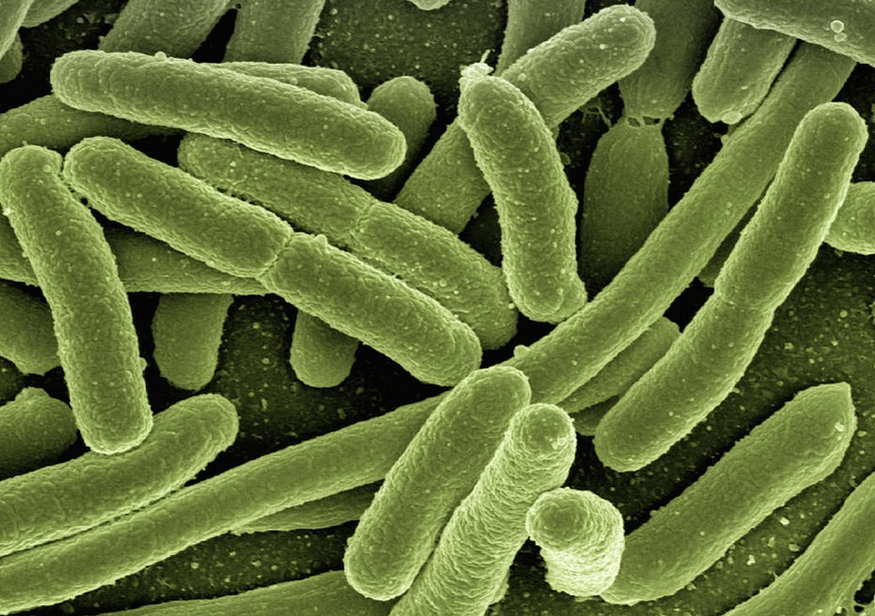Studies of antagonistic effect between Lactobacillus sakei on Escherichia coli, Listeria monocytogenes and Staphylococcus aureus
DOI:
https://doi.org/10.20873/jbb.uft.cemaf.v3n1.portellaPalabras clave:
Antimicrobial activity, complex substrates, surface responseResumen
The antimicrobial activity of a commercial probiotic culture, Lactobacillus sakei(ATCC 1521) at following
concentrations (30, 42, 60, 78 and 90 μg/ml, 105 - 107UFC/mL), temperatures of interaction (4, 10, 20, 30, 37 °C) and initial pH (3.5, 4.0, 4.5, 5.0 and 5.5) were tested against three foodborne pathogens, Escherichia coli, Listeria monocytogenesand Staphylococcus aureus. The antagonistic effect of the probiotic culture in vitro was performed by liquid microdilution method. The results indicated that the inhibitory substance present on a 24 hours culture broth could be an advantage when keeping the culture dominant during longer fermentations. For the highest lactic acid production, the incubation period of lactic acid bacteria (1.04 % v/v) was on MRS Broth in aerobic conditions, at 37 ºC/24 hours, which gave a minimum pH value of the supernatant (3.5). The data suggest that supernatant can have significant bacteriostatic activity against E. coli, L. monocytogenesand S. aureus, and may provide curedmeats with a degree of protection against this microorganism, particularly if employed with a combination of acid pH, and adequate refrigeration.
Citas
Box, G. E. P.; Hunter, W. G.; Hunter, J. S. (1978), Statistics for experimenters: An introduction to design, data analysis, and model building. In Bradley, R. A.; Hunter, J. S.; Kendall, D. G.; Watson, G. S. Eds., Wiley series in probability and mathematical statistics, Wiley, New York, 653p.
Brock, T. D.; Madigan, M. T.; Martinko, J. M.; Parker, J. (1994),Biology of Microorganisms. New Jersey: Prentice-Hall, 909p.
Cebeci, A. and Gurakan, C. (2003), Properties of potencial probiotic Lactobacillus plantarum strains, Food Microbiology,20, 511-518.
Chang, S. T.; Wu, J. H.; Wang, S. Y.; Kang, P. L.; Yang, N. S.; Shyur, L. F. (2001), Antioxidant activity of extracts from Acacia confusa bark and heartwood. Journal of Agricultural and Food Chemistry,49: 3420-3424.
Hugas, M.; Garriga, M.; Aymerich, T.; Monfort, J. M. (1993), Biochemical characterization of lactobacilli from dry fermented sausages.International Journal of Food Microbiology,18:107-113.
Hurst, A. (1983), Nisin and other inhibitory substances from lactic acid bacteria. In: BRANEN, A. L.; DAVIDSON, P. M. Ed. Antimicrobial in Foods. Marcel Deckker Inc., New York, USA, p. 327-351.
Jarvis, B. (1989), Statistical aspects of the microbiological analysis of foods. Elsevier Science Publishers, Amsterdam, The Netherlands.
Klaenhammer, T. R. (2001), Probiotics and prebiotics. In: Doyle, M. P.; Beuchat, L. R.; Montville, T. J. Food microbiology: fundamentals and frontiers. 2.ed. Washington: ASM, p. 797-811.
Koutsoumanis, K. P. and Sofos, J. N. (2005), Effect of inoculum size on the combined temperature, pH and aw limits for growth of Listeria monocytogenes. International Journal of Food Microbiology,104:83-91.
Man, J. C.; Rogosa, M.; Sharpe, M. E. (1961).A medium for the cultivation ofLactobacilli.Journal of Applied Bacteriology,23:130-5.
Parker, R. B. (1974), Probiotics: the other half of the antibiotics story.Animal Nutrition and Health, 29, 4-8.
Schillinger, U.; Lücke, F. K. (1990), Lactic acid bacteria as protective cultures in meat products.Fleischwirtsch, 70, 1296-1299.
Shah, N. P. (2000), Probiotic bacteria: Selective enumeration and survival in dairy foods. JournalDairy Science, v.83, p.894-907.
Silva, N.; Junqueira, V. C. A.; Silveira, N. F. A. (2001), Manual de métodos de análise microbiológica de alimentos. 2. ed. São Paulo: Livraria Varela, 317p.
Vandenberg, P. A. (1993), Lactic acid bacteria, their metabolic products and interference with microbial growth. FEMS Microbiology Reviews, 12:221-238.

Descargas
Publicado
Cómo citar
Número
Sección
Licencia
Copyright (c) 2024 - Journal of Biotechnology and Biodiversity

Esta obra está bajo una Licencia Creative Commons Atribución 4.0 Internacional.
Los autores que publican en esta revista aceptan los siguientes términos:
Los autores mantienen los derechos autorales y conceden a la revista el derecho de primera publicación, con el trabajo simultáneamente licenciado bajo la LicenciaCreative Commons Attribution (CC BY 4.0 en el link http://creativecommons.org/licenses/by/4.0/) que permite compartir el trabajo con reconocimiento de la autoría y publicación inicial en esta revista.
Los autores tienen autorización para asumir contratos adicionales separadamente, para distribución no exclusiva de la versión del trabajo publicado en esta revista (ej.: publicar en repositorio institucional o como capítulo de libro), con reconocimiento de autoría y publicación inicial en esta revista.
A los autores se les permite, y son estimulados, a publicar y distribuir su trabajo online (ej.: en repositorios institucionales o en su página personal) en cualquier punto antes o durante el proceso editorial, ya que esto puede generar alteraciones productivas, bien como aumentar el impacto y la citación del trabajo publicado (disponible en El Efecto del Acceso Libre en el link http://opcit.eprints.org/oacitation-biblio.html).


